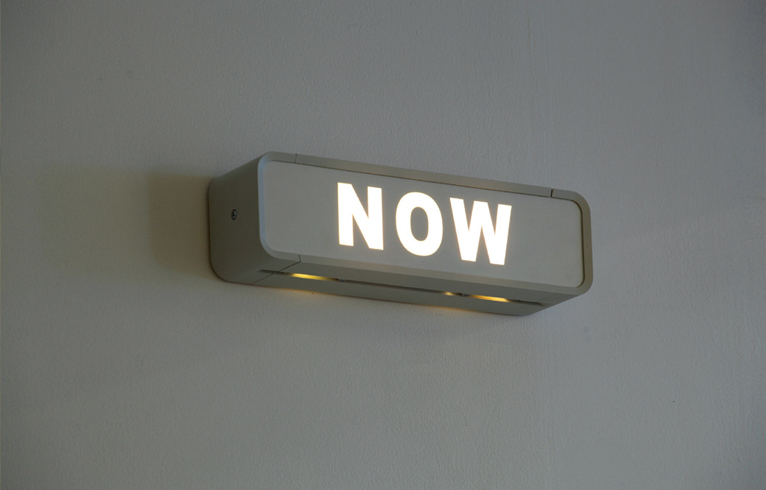SU-MEI TSE: LAPSES OF TIME
| February 10, 2012 | Post In LEAP 12

When composer John Cage performed the silent composition 4’33 in 1952, his idea was that silence was never silent, but a space filled with unintentional, musical sounds. Artist and musician Su-Mei Tse’s solo exhibition “Lapses of Time” evokes this notion in the treatment of the exhibition space, here divided into two rooms. Starting with the first room, the white cube is approached as compositional frame where sculptures and images rendered predominately in grayscale seamlessly blend into the room as if soundproofing the walls with their conceptual padding. Time Lapse, shifted (2011), visualizes this framing. A site-specific installation, the gallery floor’s mosaic pattern is printed onto a large roll of facsimile paper hanging from the ceiling. As the pattern reaches the suspended paper roll, it dissolves into the white surface.
Though aesthetically and materially varied, the artworks are rhythmically bound by Jetzt=Jetzt (Now=Now) (2008), a sign wherein the word “Now” flashes on and off. Functioning as a metronome, the staccato rhythm expresses the present as a moment that is never still, or somehow lost in its fleeting nature: a tense juxtaposition with static artworks. Trees and Roots #1 (2011), a C-print on fine art paper, shows trees waiting to, be transported, their roots bundled up in burlap and rope. Removed from the soil, their context, the trees are dead. Yet in carrying their roots, they somehow contain a memory, or trace, of life. Rendered in silver-scale, the photograph is viewed as a composed image in a state of temporal stasis: a snapshot of a “now.”
This idea extends to the classical motif of still life as both representation of life and lifelessness. Stille Disco (2010), a stereo system made of porous stone, plays with the inversion of the English “still life” or German stillleben. In its French translation: nature morte. The sculpture acts as tombstone, archaeological relic, and monument in one: a lifeless object imbued with echoes of vibrancy. Nearby, Silent Party (2010), a trio of loudspeakers coated in tiny, white, snow-like polystyrene balls, is positioned from the ceiling like a disco ball: a literal depiction of white noise— that static, crackling sound— and still life as freeze frame. In both sculptures, the stillness sparks a meeting between the linear concept of time and the subjective, sensory experience of memory.
It is from this point of departure that the second room is introduced, a room where objects have been replaced with video and sound. Musician Giancarlo Vulcano’s soothing musical accompaniment to the large video projection Vertigen de la Vida (Dizziness of Life) (2011) plays against the crackling sound of an empty vinyl record coming from the smaller video projection White Noise #2 (2011). Referencing Man Ray’s experimental 1923 silent film, Le Retour à la Raison [The Return to Reason], Vertigen de la Vida (Dizziness of Life) appropriates the carousel of the original, but turns the carousel seats into soft balls of white light, brightening and fading as they spin in relation to the notes of the music they move to.
There is purity to the video’s visualization of memories and thoughts, ignited as if in hazy recollection. As white noise audibly fills the space, there is lightness that expands beyond the confines of the white cube, just as the inkblots of the triptych Schmerzhafte ZwischenTöne (2011), viewed in the first room, fall upon musical staves, yet do not adhere to the frame. This recalls a work not officially included in the show but visible inside the AD Gallery office: a photograph of Su-Mei Tse wearing headphones made of seashells, a reminder of the space where silence is never silent and memory resides: the mind. Indeed, what is silence if not a time lapse? An interruptive moment when one is left with nothing but the space between one’s ears? It is here that the amalgamation of sensory fragments is composed into images, or memories, that constitute the experiences of a multitude of “nows” that once were. Stephanie Bailey

